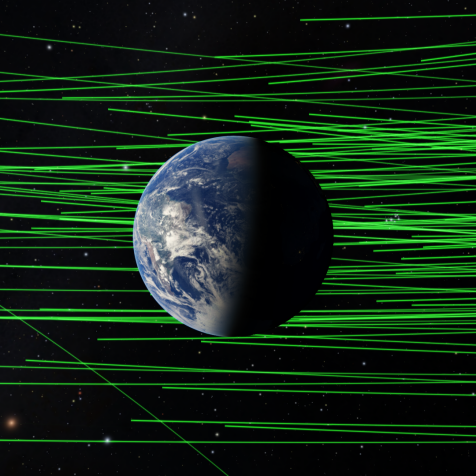
How to Watch the Orionids Meteor Shower in 2021
If you've seen a shooting star on a recent stargazing jaunt, you've spotted the very beginning of the Orionids meteor shower. It happens every fall in October or early November, and peak viewing hours are coming soon to skies near you.
(Updated 10/21/21)
Where to See It
Anywhere! The meteor shower is visible literally anywhere on Earth. You have to go outside, but that's the only real rule.
When to See It
This year, the best viewing window will come around October 21. (That's a Thursday.) While the moon doesn't always behave when it comes to peak meteor shower viewing, this year it should be getting close to waning, so the light it produces shouldn't outshine the meteors too much.
That said, the meteor shower lasts more than one night. It actually runs from October 2 to November 7, so you have plenty of opportunities to catch it. Thursday night will be the shower's peak, but you could also take your chances on Friday morning. Though meteor showers are always unpredictable, you should be able to see somewhere between 10 and 20 meteors per hour.
How to See It
You just need to track down the meteor shower's namesake constellation, Orion the Hunter, in the sky. (The easiest method is to find three bright stars in a short row; that's his belt.) From there, find his sword area; the bulk of the meteors will be emerging from around there.

That's it! You don't need any special gear to watch the shower. Experts actually advise against using binoculars or telescopes. They magnify the sky, but also limit your field of vision. Ultimately, the naked eye works better.
What Is the Orionids Meteor Shower?
Short answer: flaming space junk! If you'd prefer a longer answer, though: This particular shower is composed of debris from Halley's Comet, a famous comet that zooms past Earth every 75 years or so. It's been in action for millennia — the first Halley sighting was recorded in 239 B.C.E. — leaving a long, looping trail of debris in its wake.
The Orionids shower happens when Earth orbits through a specific patch of this trail. (It's not the only Halley-related meteor shower, though; Halley also gave us the Eta Aquarids, which happen every May.) The chunks of debris hit the Earth's atmosphere at an incredible speed — think 41 miles per second. Thankfully, these chunks are tiny compared to, say, the meteor that wiped out the dinosaurs. Some of them are as small as a grain of sand. So instead of kicking off the apocalypse, these bits of junk vaporize in motion in midair, creating the shooting-star effect we all know and love and make wishes on.
No actual stars are involved, though. Meteor showers are really just flaming space junk — though they're way more picturesque than that sounds.
This article first appeared on Curiosity.com. Click here to read the original article.
Views of the Orionids
Here are some images captured around the world and shared online.












































































